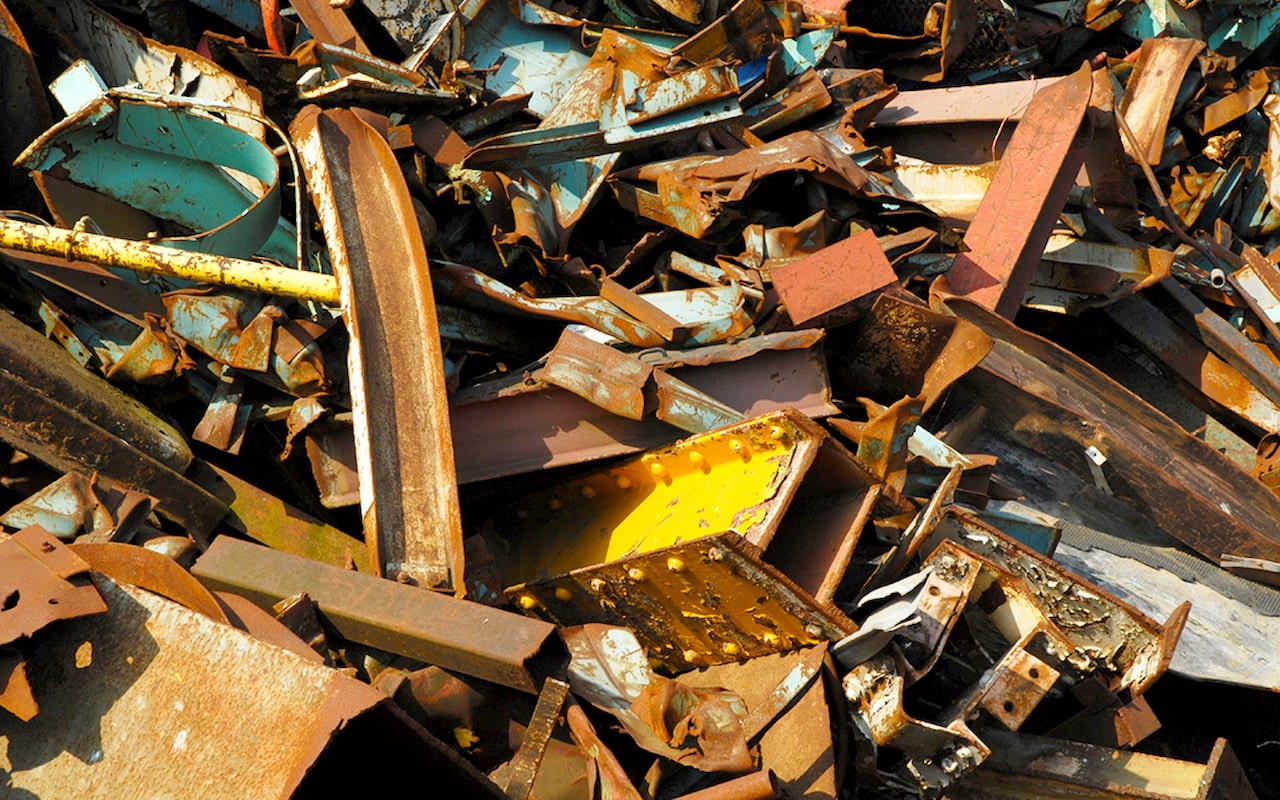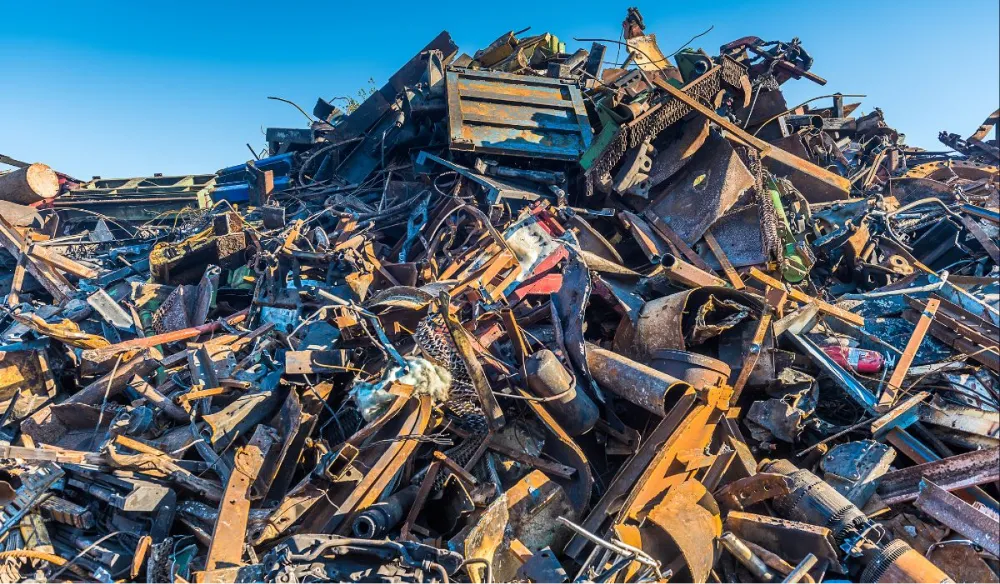Views: 0 Author: Rachel Wynn Publish Time: 2025-04-23 Origin: Site











Scrap steel, as a fundamental raw material in the global steelmaking process, plays a vital role in supporting industrial production and promoting sustainable development. The pricing of scrap steel is highly dynamic, influenced by a complex set of economic, industrial, and geopolitical factors.
This article provides an in-depth analysis of scrap steel prices, including their definition, key influencing factors, current market trends, and the importance of monitoring these prices for stakeholders in the steel industry.
Scrap steel refers to recycled steel materials obtained from end-of-life products, manufacturing waste, and demolished structures.
Rather than extracting new iron ore, steel manufacturers often prefer to utilize scrap steel due to its cost-effectiveness and significant environmental advantages.
Scrap steel is categorized into several grades based on purity, size, and alloy content, including:
Heavy Melting Scrap (HMS)
Shredded Scrap
Cast Iron Scrap
Steel Turnings and Borings
Scrap is either melted directly in electric arc furnaces (EAF) or combined with virgin raw materials in basic oxygen furnaces (BOF) to produce new steel products.
The market price of scrap steel fluctuates in response to a range of internal and external factors, including:
Supply Sources: Availability of demolition projects, industrial production waste, and end-of-life vehicles directly affect scrap volumes.
Demand Drivers: Increased steel production, especially in construction, automotive, and infrastructure sectors, raises demand for scrap as a raw material.

Economic Growth: Booming economies fuel higher demand for steel products, which consequently elevates scrap prices.
Recession Impacts: Economic slowdowns lead to reduced steel consumption and lower scrap prices due to weakened demand.
As iron ore and coking coal prices rise, steelmakers often substitute more expensive virgin materials with scrap steel, increasing its value.
Scrap steel collection, processing, and transportation are energy-intensive activities.
Fluctuations in oil prices and freight costs directly impact the delivered price of scrap, particularly in international trade.
Stricter environmental policies, carbon taxes, and government recycling incentives in regions like Europe and East Asia have amplified the importance and value of scrap steel.
Export restrictions (e.g., Russia’s scrap export taxes) and import tariffs significantly reshape global scrap flows, influencing regional price disparities.
Since scrap steel is predominantly traded in U.S. dollars, fluctuations in local currencies can impact purchasing power, thereby affecting regional demand and pricing structures.
In 2025, the scrap steel market remains resilient, supported by the following macro trends:
Sustainability Push: Increased emphasis on low-carbon steel production globally enhances scrap demand, especially from EAF-based mills.
Infrastructure Investments: Large-scale government infrastructure projects in Southeast Asia and the Middle East stimulate scrap consumption.
Logistics Bottlenecks: Ongoing global shipping challenges lead to localized price volatility, with regional premiums emerging in high-demand zones.
According to Fastmarkets and other industry sources, as of Q2 2025:
U.S. domestic shredded scrap prices are averaging around $420-450/metric ton.
Export prices to Southeast Asia remain robust due to strong demand, particularly from Vietnam, Indonesia, and the Philippines.
Middle East markets, traditionally importers of secondary scrap, have seen a 7-10% year-on-year price increase due to infrastructure expansion.

For steel manufacturers, distributors, and traders, closely tracking scrap steel prices is crucial to:
Optimize procurement timing and cost structure.
Enhance margin management amid volatile raw material costs.
Strengthen strategic planning against geopolitical and economic uncertainties.
Companies like Dengwei Steel maintain active monitoring systems to adapt procurement and sales strategies, ensuring price competitiveness and supply reliability for global customers.
Scrap steel prices are not merely a reflection of market supply and demand; they are a critical barometer of global industrial health, environmental progress, and economic shifts.
Businesses that stay informed and responsive to scrap steel market trends will be better positioned to maintain resilience and competitiveness in an increasingly dynamic global steel market.
1. How does the quality of scrap steel affect its price?
The quality of scrap steel is a key factor in determining its price. Higher-quality scrap, such as clean and sorted materials with fewer contaminants, typically commands a premium. Scrap with higher alloy content or less impurities, such as stainless steel, also tends to have higher prices due to its greater value in steel production. The purity and grade of the scrap directly impact its suitability for different types of steel production processes, such as electric arc furnaces (EAF) or basic oxygen furnaces (BOF).
2. How do local recycling policies impact scrap steel prices?
Local recycling policies can significantly influence scrap steel prices. Regions with stringent recycling regulations or government incentives for recycling, such as tax breaks or subsidies, often see higher scrap collection rates and stronger demand. For example, European and East Asian markets, where recycling practices are heavily regulated, generally see more efficient scrap supply chains and can experience higher prices as a result of regulatory pressures to recycle more.
3. What role do scrap steel exports play in global pricing trends?
Scrap steel exports play a significant role in shaping global pricing trends. Countries that are major exporters of scrap, such as the U.S. and Japan, contribute to global price formation by meeting the demand from regions with growing steel production needs, like Southeast Asia. The balance between supply from exporting countries and demand from importing regions, such as China or India, can lead to price fluctuations on a global scale, influenced by export restrictions or tariffs.
4. How do fluctuations in energy prices affect scrap steel pricing?
Energy prices, particularly oil and electricity costs, are integral to the pricing of scrap steel because the collection, processing, and transportation of scrap are energy-intensive. As energy costs rise, the overall cost of scrap steel production and transport increases, which can lead to higher prices for scrap. For example, higher oil prices can increase transportation costs for scrap steel across long distances, particularly in international trade, impacting its final price in global markets.
5. What are the long-term prospects for scrap steel prices given global sustainability goals?
The long-term prospects for scrap steel prices appear positive, driven by increasing global sustainability goals and the push for low-carbon steel production. As countries and companies strive to meet carbon reduction targets, the demand for scrap steel, particularly in Electric Arc Furnace (EAF) production, is expected to rise. EAF-based steel production relies heavily on scrap, making it an essential component of decarbonizing the steel industry. This shift toward more sustainable practices could further boost scrap steel prices as demand for recycled materials grows.






